BY LINCOLN ANDERSON | A beach! With oysters!
No, it’s not Cape Cod — but Gansevoort Peninsula, hard by the rushing traffic of the West Side Highway. And it’s more than just a beach and oysters — it’s also a soccer field, a sizable grass lawn, a boat launch, dog runs, a picnic area, a natural marshland and more. … You could say this park is multitasking.
The beautiful new public space by the West Village and Meatpacking District in Hudson River Park officially opened on Mon., Oct. 2.
The new 5.5-acre park — located between Gansevoort and Little W. 12th Streets, opposite the Whitney Museum — boasts the much-hyped “beach” — basically, a large, flat sandy area on its southern side, sporting umbrellas, blue Adirondack-style chairs and a water mister. This beach, though, does not literally stretch down into the Hudson River, but is for sunbathing.
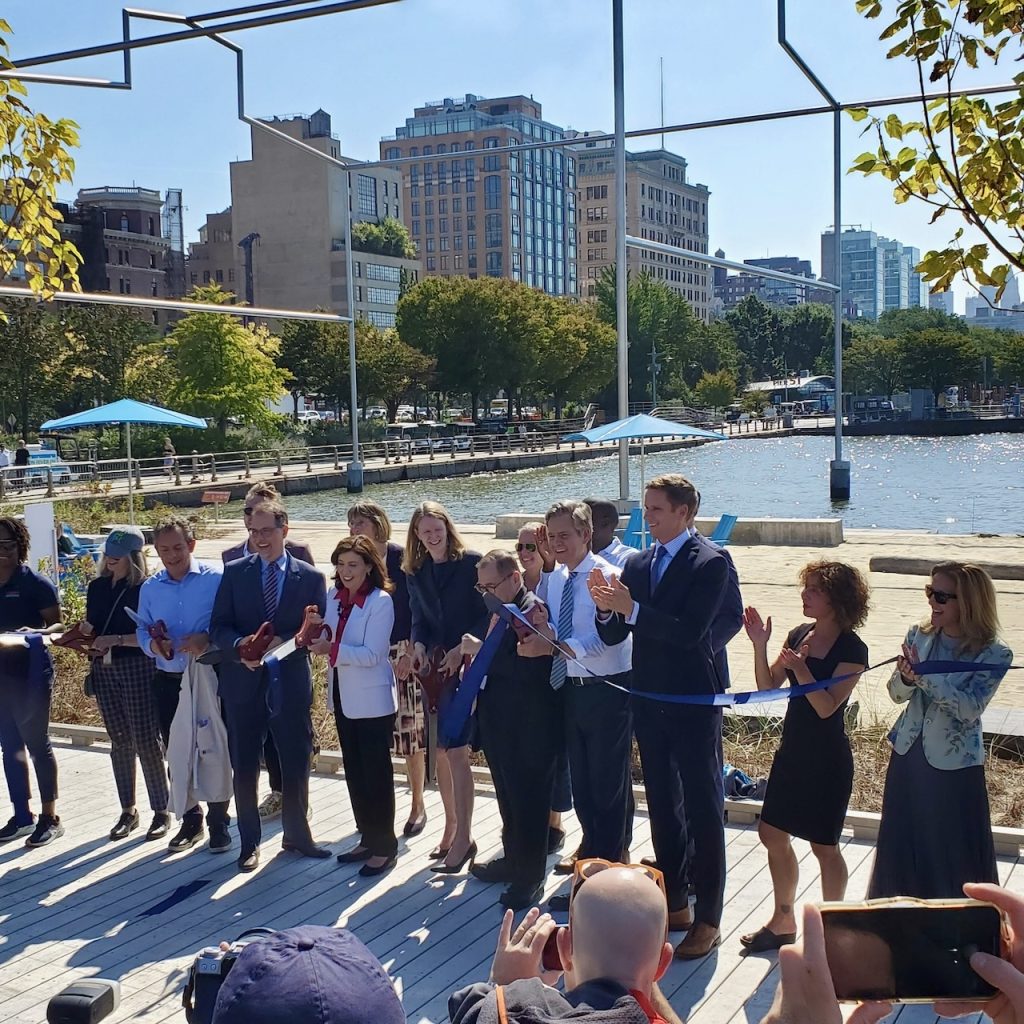
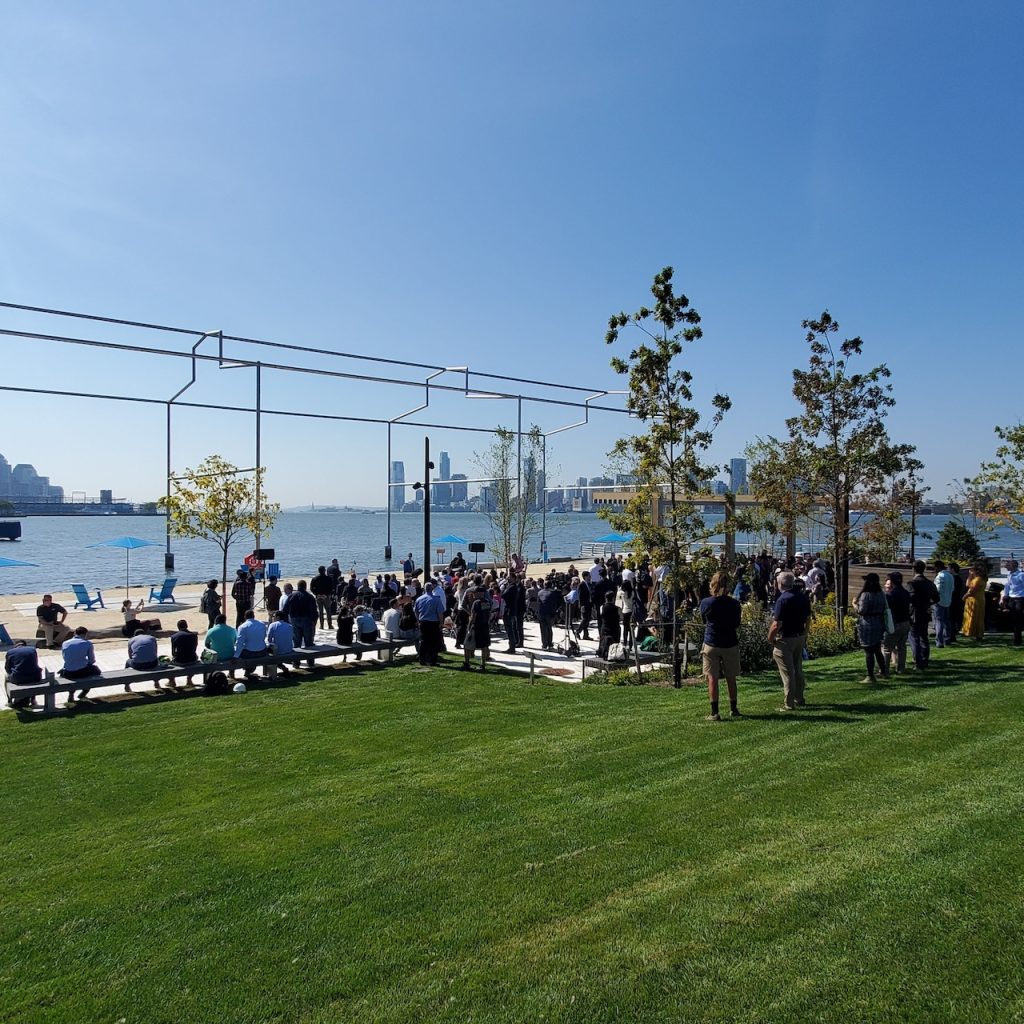
Instead there is a concrete ramp that angles down to the water and is meant — not for bathers — but for launching small, non-motorized boats, like kayaks. Signs are posted warning that there are dangerous currents and that no swimming or fishing are allowed.
The beach offers a great southern vista of the Lower Manhattan skyline, the river, and the Statue of Liberty. Closer at hand is “Day’s End,” the 2021 sculpture by David Hammons, commissioned by the Whitney, which traces the outlines of a vanished pier that once sat just off the peninsula’s southern edge.
Among the redeveloped peninsula’s other features are, in its middle, a huge real-grass lawn, plus a sprawling, artificial-turf “U13” sports field (the correct size for youth league games for players under age 13); on its western edge, picnic tables and seating; on its northern edge, a calisthenics workout area, two dog runs (one for large and another for small dogs) and an ecological saltwater marsh zone; and, on its eastern side, a small building with public restrooms and a concession stand. In addition, a boardwalk wends through a pine grove in the park’s middle before opening up majestically onto the park’s western riverfront esplanade.
Also, 20 million juvenile oysters have been seeded around the land projection.
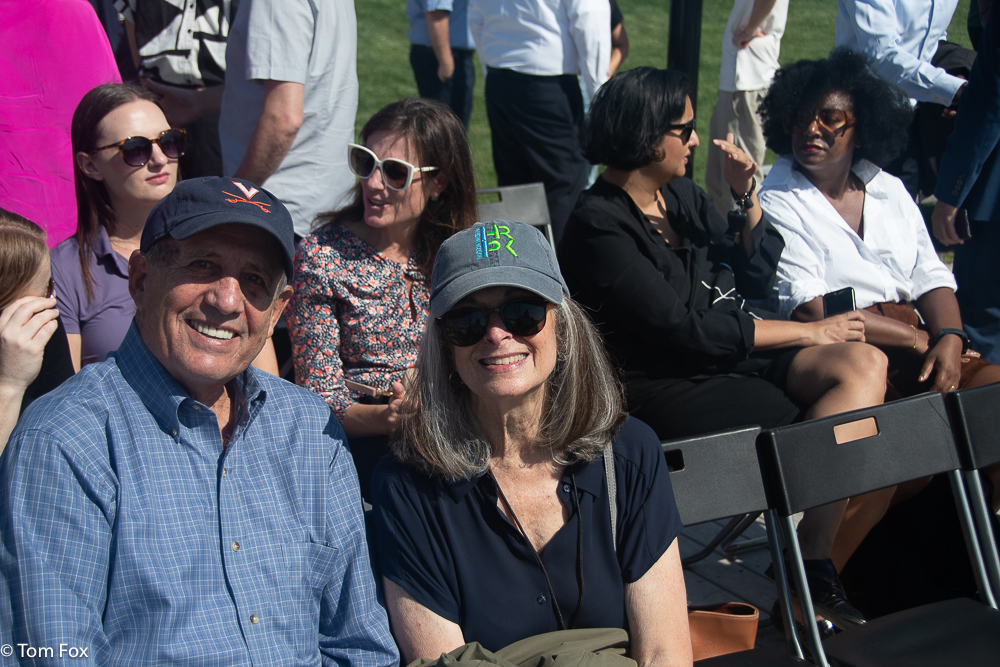
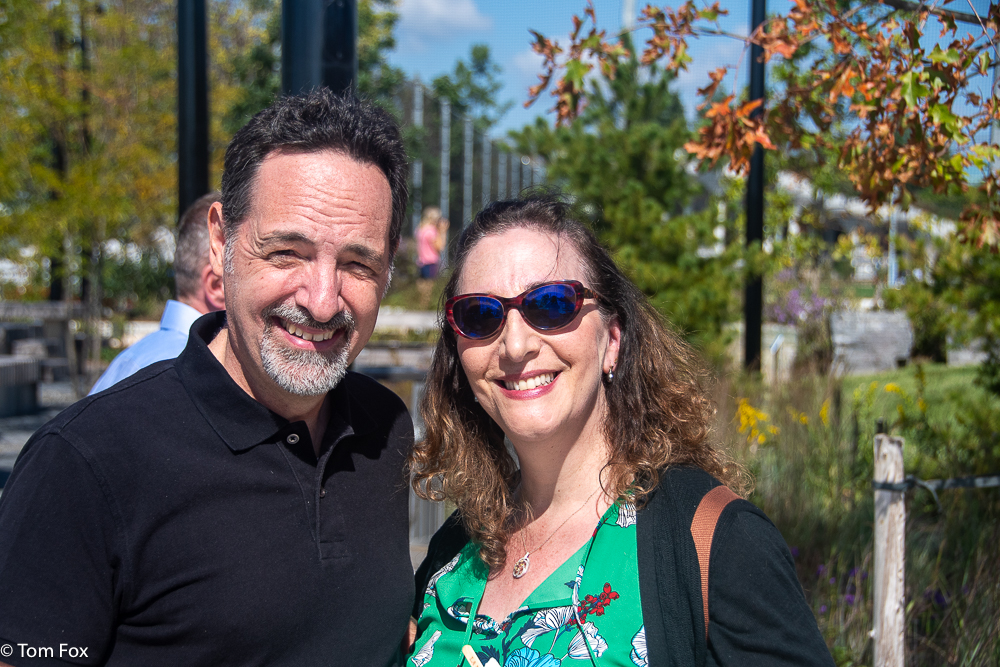
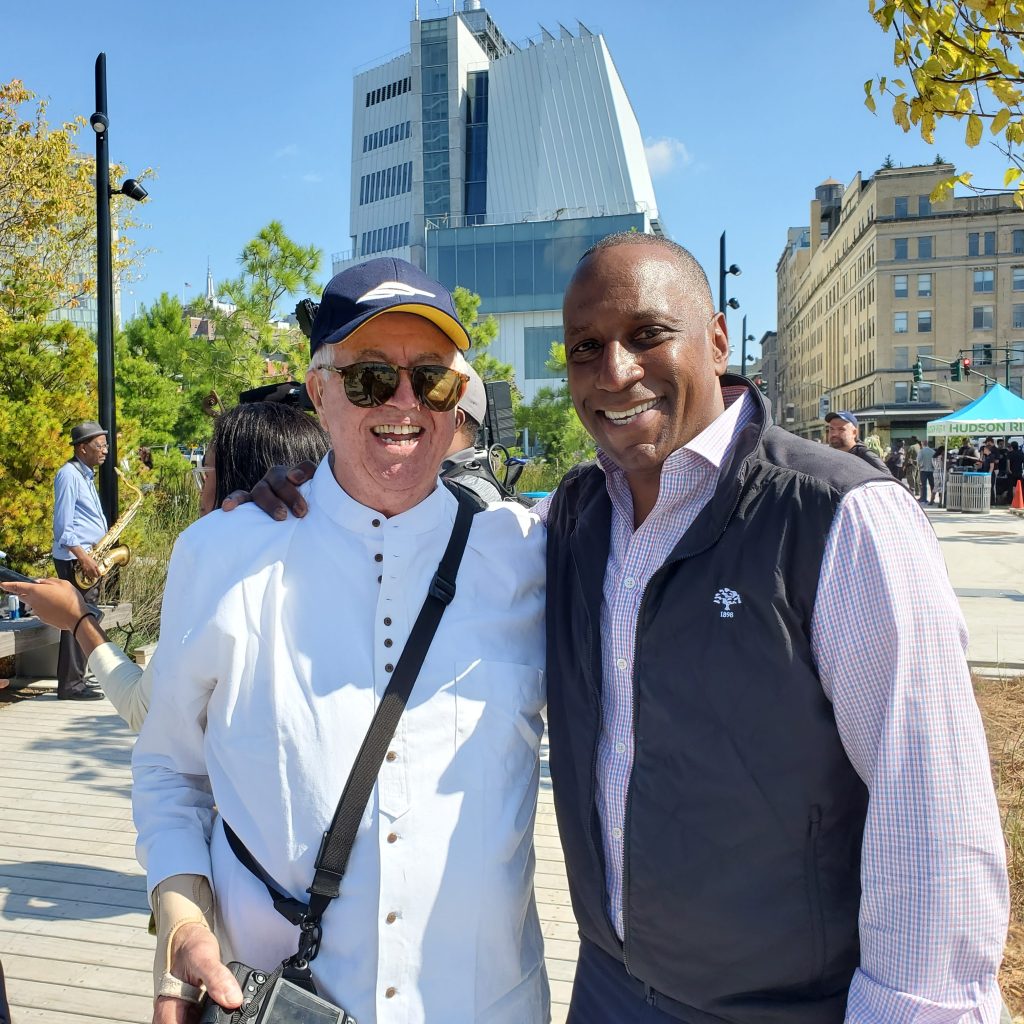
At the time of the opening ceremony, the saltwater marsh was still covered by a lattice of crisscrossed fishing line sporting small, sparkling, silver foil tags (perhaps to keep birds away while the plants take root and grow) and appeared not to be completed, the dog runs also were not finished and the restrooms building was still under construction, as well. The playing fields were not open yet, either.
The Gansevoort project — led by the Hudson River Park Trust, with the design led by Field Operations — cost a total of $73 million. Creating the park took four years from planning to completion, including two years of construction.
A community-driven charrette process starting back in 2019 helped hash out the park’s division of active versus passive recreation space, plus environmental features. Among key stakeholders were Downtown’s youth sports leagues — including Greenwich Village Little League and Downtown United Soccer Club — representing thousands of families whose children use Hudson River Park’s massive Pier 40 courtyard sports field, but which are always in need of more field space.
Notably dropped from the design was the city’s former plan to activate a decommissioned marine waste-transfer station on Gansevoort’s western edge — for either household waste or recyclables — complete with a recycling museum to boot. The youth leagues, in particular, though, had voiced safety concerns about having streams of garbage trucks plying a road along the peninsula’s northern and western edge as their kids were playing sports nearby.

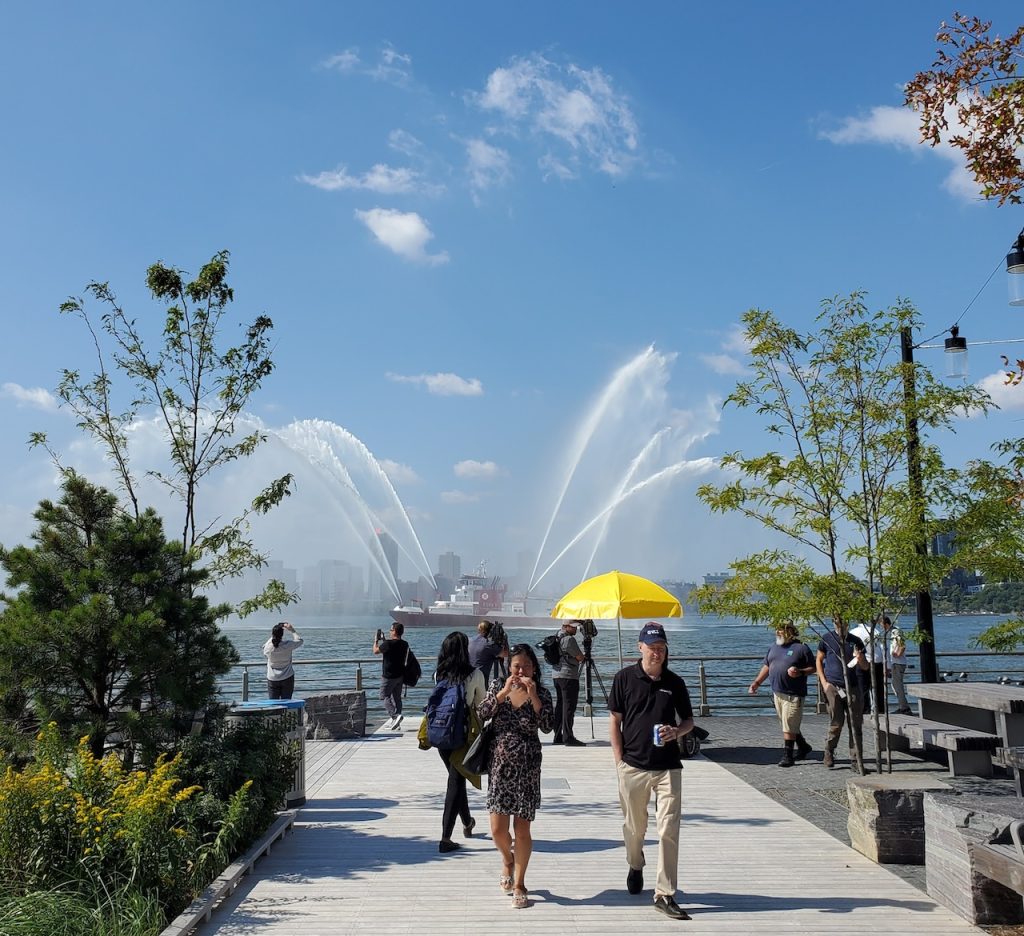
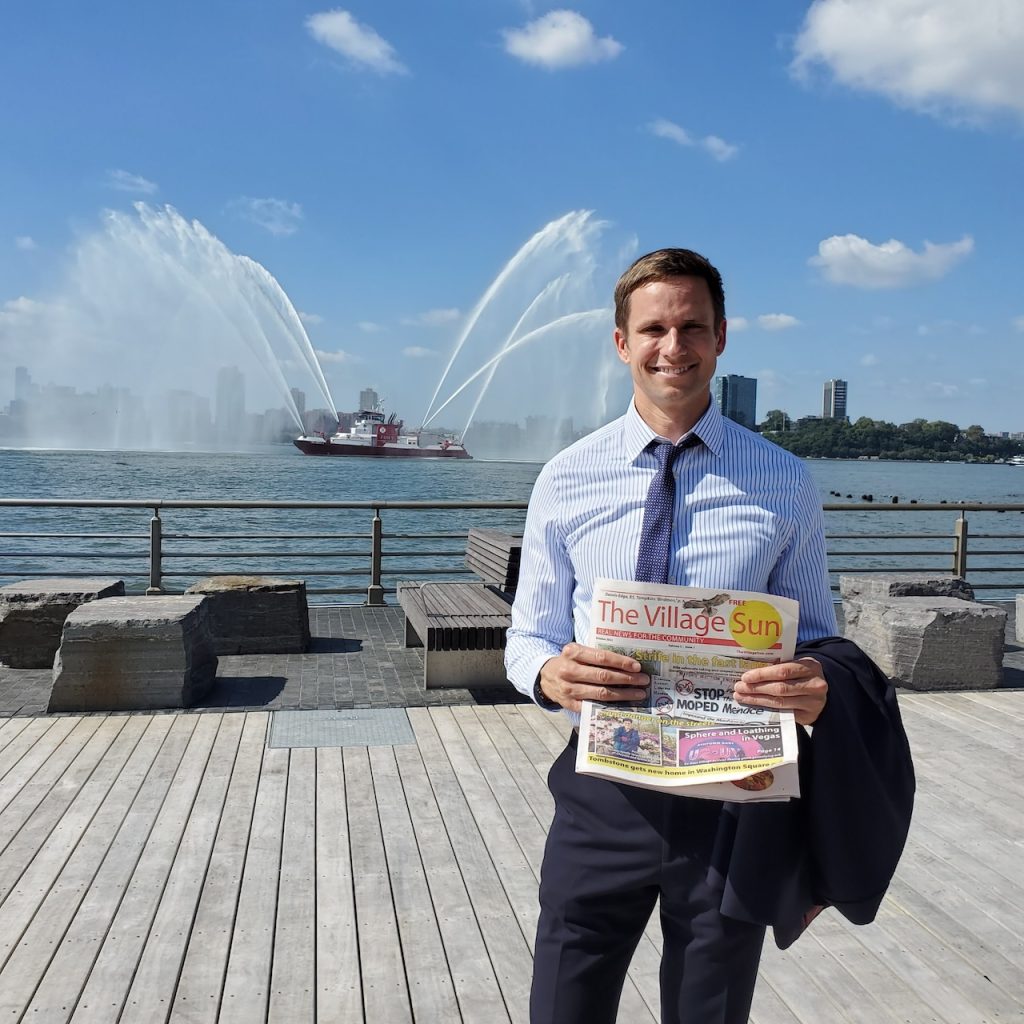
As part of the project, Gansevoort Peninsula’s height was raised, putting it safely above the flood zone.
(The rest of Hudson River Park, though, is a “wash-through” park, meaning it’s still subject to flooding. The Army Corps of Engineers is currently proposing to build a concrete-wall barrier along the park’s eastern edge to prevent inland flooding — although many local stakeholders oppose that blunt design.)
“This collaboration between New York City and State will benefit everyone who visits here on the shore of the Hudson,” Governor Hochul said at the new park’s ribbon-cutting. “And it checks a lot of boxes, from climate change mitigation to competition on the ball fields, from a stroll with your pup to sitting on the beach. It’s been 25 years in the making and we’ve shown once again that anything worth having is worth working for.”
Mayor Adams did not attend but issued a statement.
“Gansevoort Peninsula is a true green space for the 21st century,” he said, “incorporating innovative design and helping to prepare the West Side of Manhattan for climate change. The city has invested more than $70 million in this critical project that will help us reach that goal, and we hope New Yorkers enjoy all the wonderful amenities it has to offer.”
Deputy Mayor Meera Joshi did give remarks at the event. She noted that her son is fortunate to have been able to enjoy the now quarter-century-old Hudson River Park.
“The park is part of his life,” she said.
Noreen Doyle, the president and C.E.O. of the Hudson River Park Trust, called the peninsula’s transformation “a decades-long endeavor.”
“Twenty-five years ago, Hudson River Park was a big dream, and Gansevoort was an even bigger one,” she said. “Converting this former Sanitation facility into the sparkling public open space it is today has been a decades-long endeavor. … Beyond adding 5.5 new acres of extraordinary park to New York’s open space network, Gansevoort also connects communities to their Hudson River, completing a gap in the park’s 4-mile footprint, and making it infinitely more pleasurable to travel between our surrounding West Side neighborhoods.”
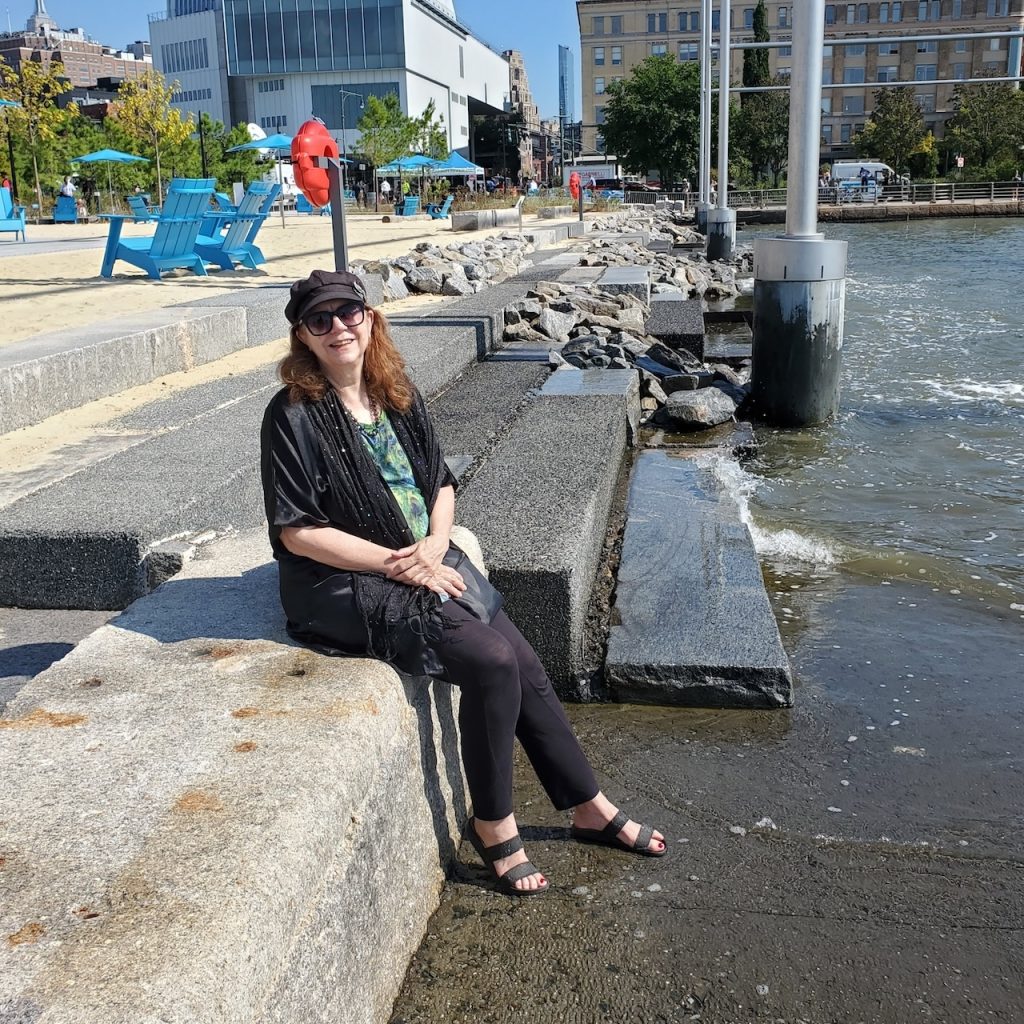
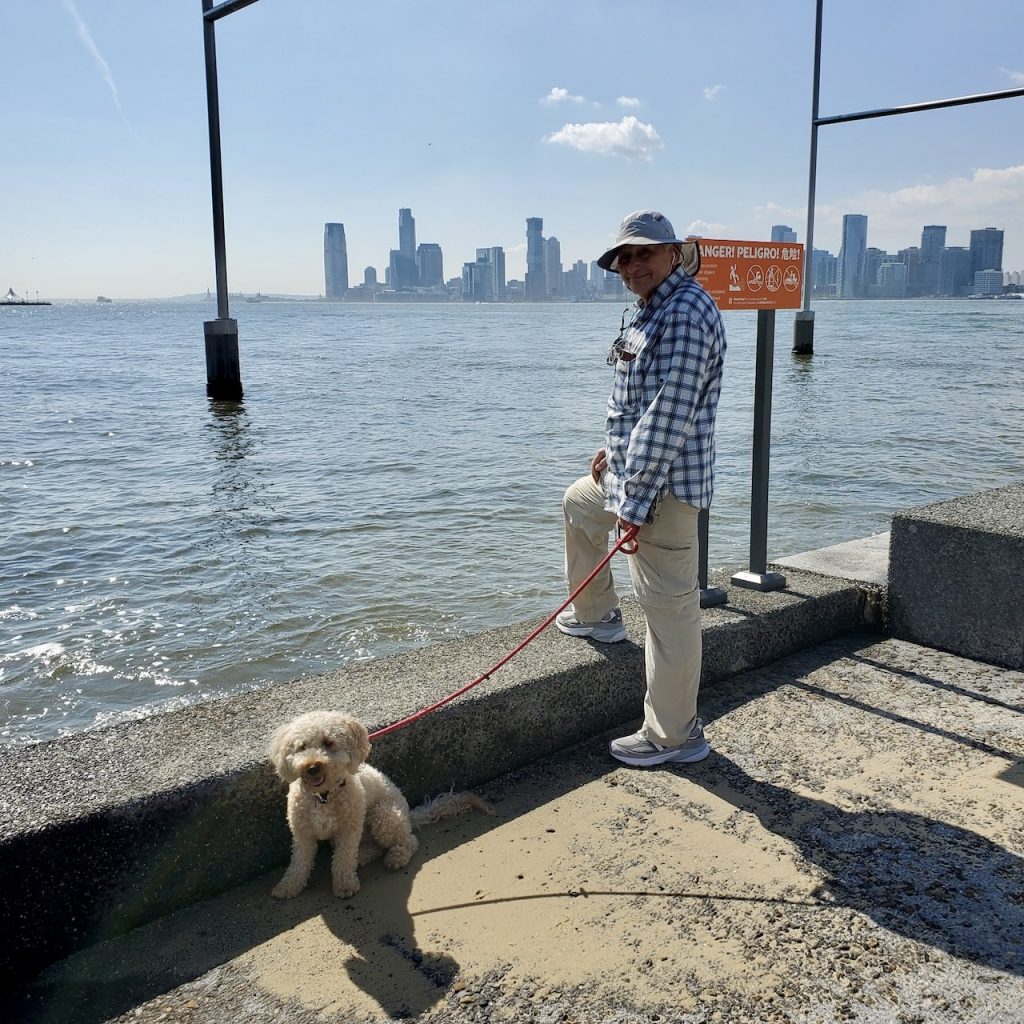
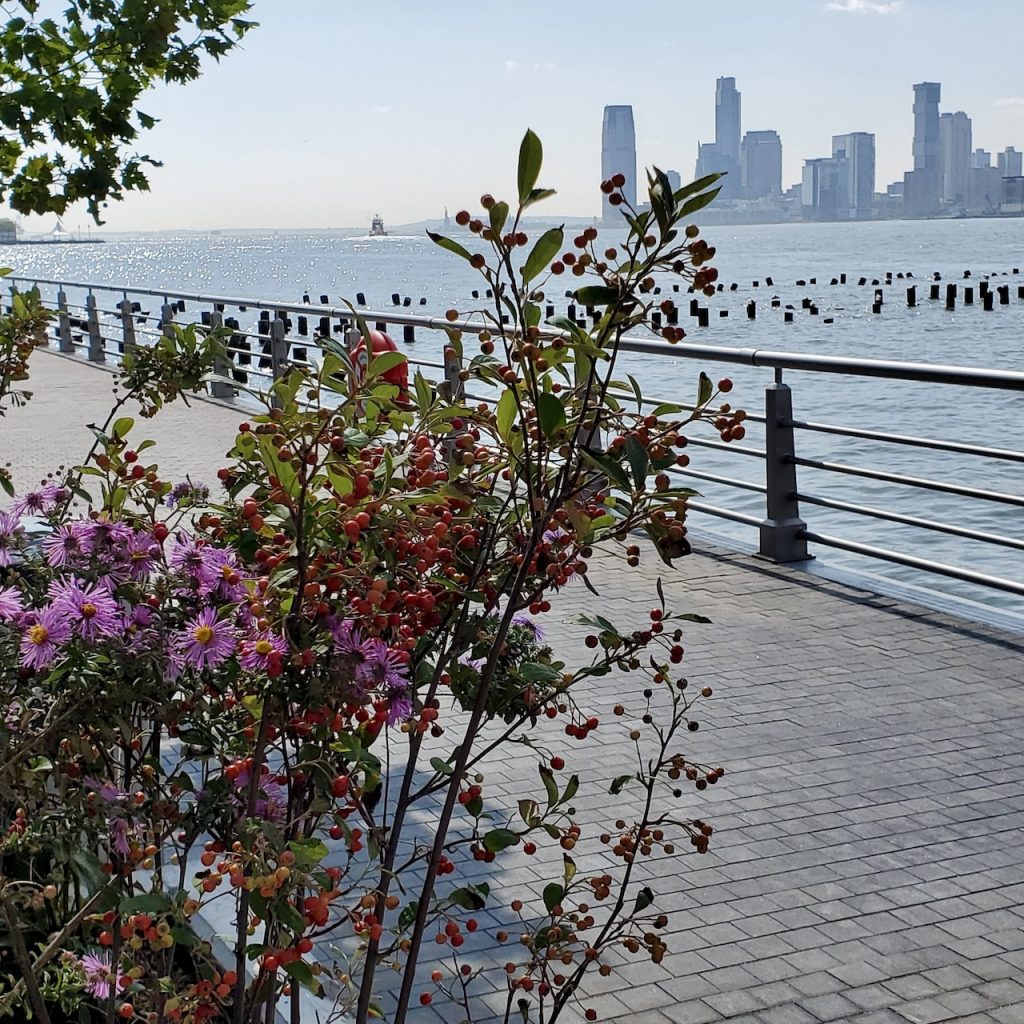
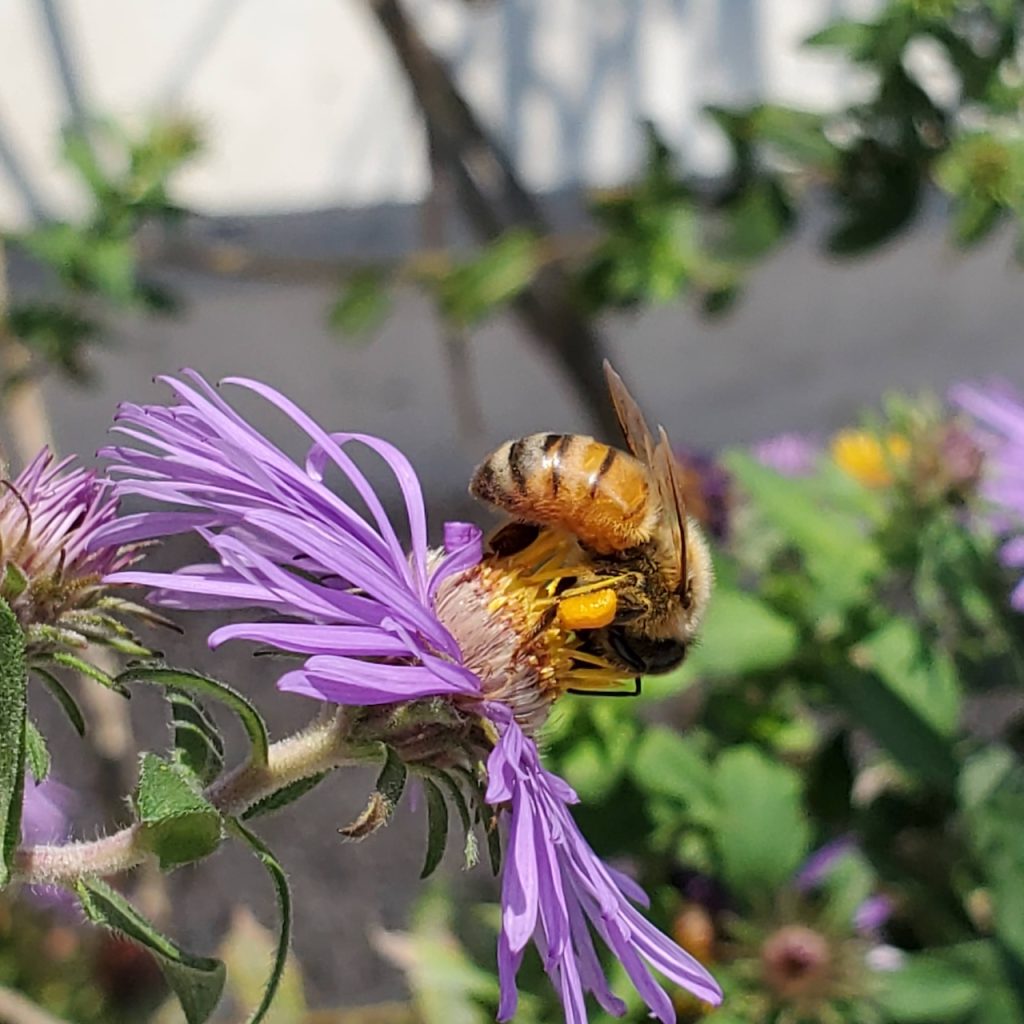
The Trust is a joint state-city authority, and the park itself — stretching from Chambers Street to 57th Street — is a mix of city-owned and state-owned land. Thanking Mayor Adams, Doyle noted that, while Gansevoort Peninsula is state-owned land, it was New York City that funded its redevelopment into a park.
Susan Kent, the chairperson of Community Board 2, called the peninsula’s design “a victory [for] collaborative process.”
“Years of effort have resulted in a unique public space with a host of features that reflect a willingness to accept input from many voices and perspectives, including area residents, Community Board 2, the Hudson River Park Trust and a design team responsive to neighborhood commentary,” she said. “Gansevoort Peninsula is a testament to the collaborative process, an uncompromising attention to detail, and an acknowledgement that there is no replacement for the value of community knowledge and insight. It is a victory not only for the residents of our district and the West Side of Manhattan, but for all New Yorkers.”
Five other former C.B. 2 chairpersons were also at the event — Jeannine Kiely, Carter Booth, David Gruber, Tobi Bergman and state Senator Brad Hoylman-Sigal — not surprising given what a big issue Hudson River Park’s ongoing development is for the community.
“I don’t think it could have been done better,” Bergman said of the new park.
Gansevoort Peninsula also will be newly connected to the inland community through what’s being dubbed “Gansevoort Landing,” a new crosswalk created by the New York State and New York City Departments of Transportation, plus a pedestrian plaza created by the Meatpacking District Business Improvement District.
The Fire Department’s Marine Company 1 continues to be housed at the peninsula’s northwest corner.
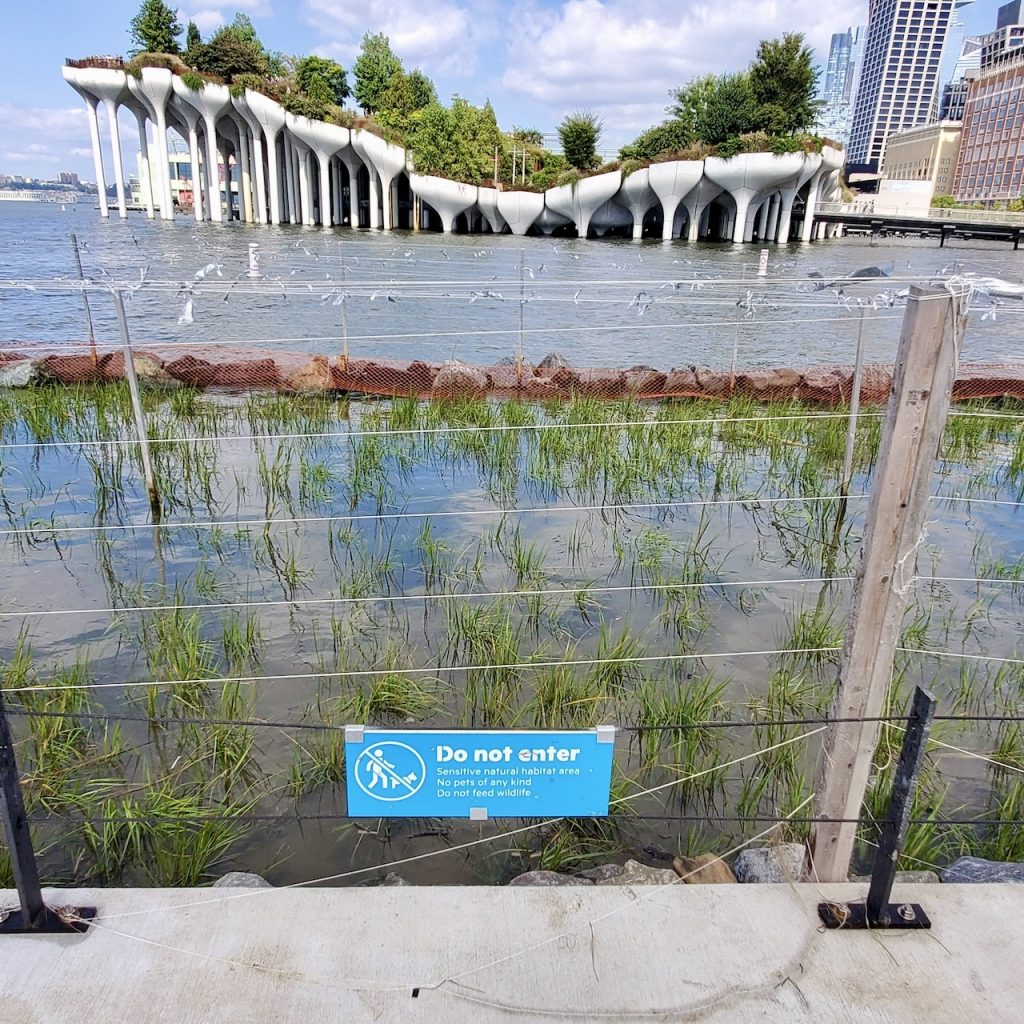
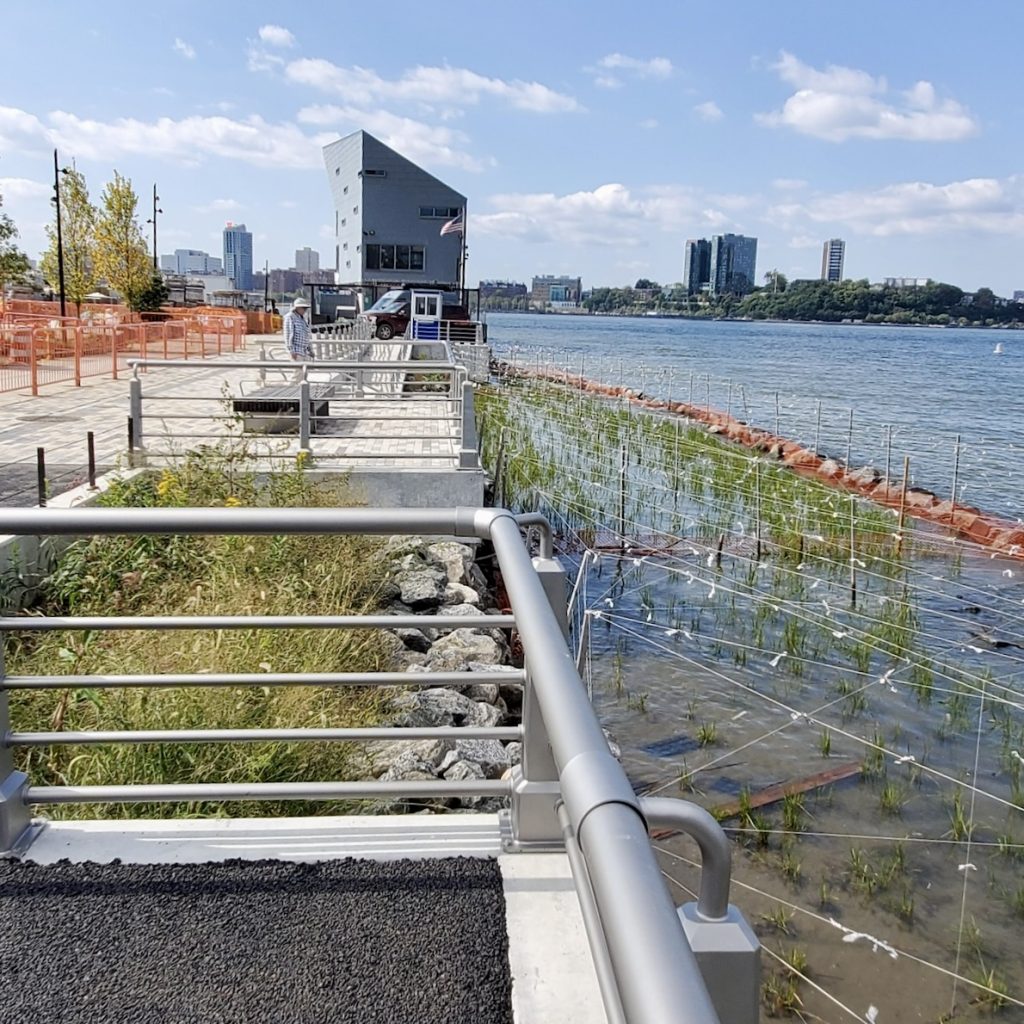
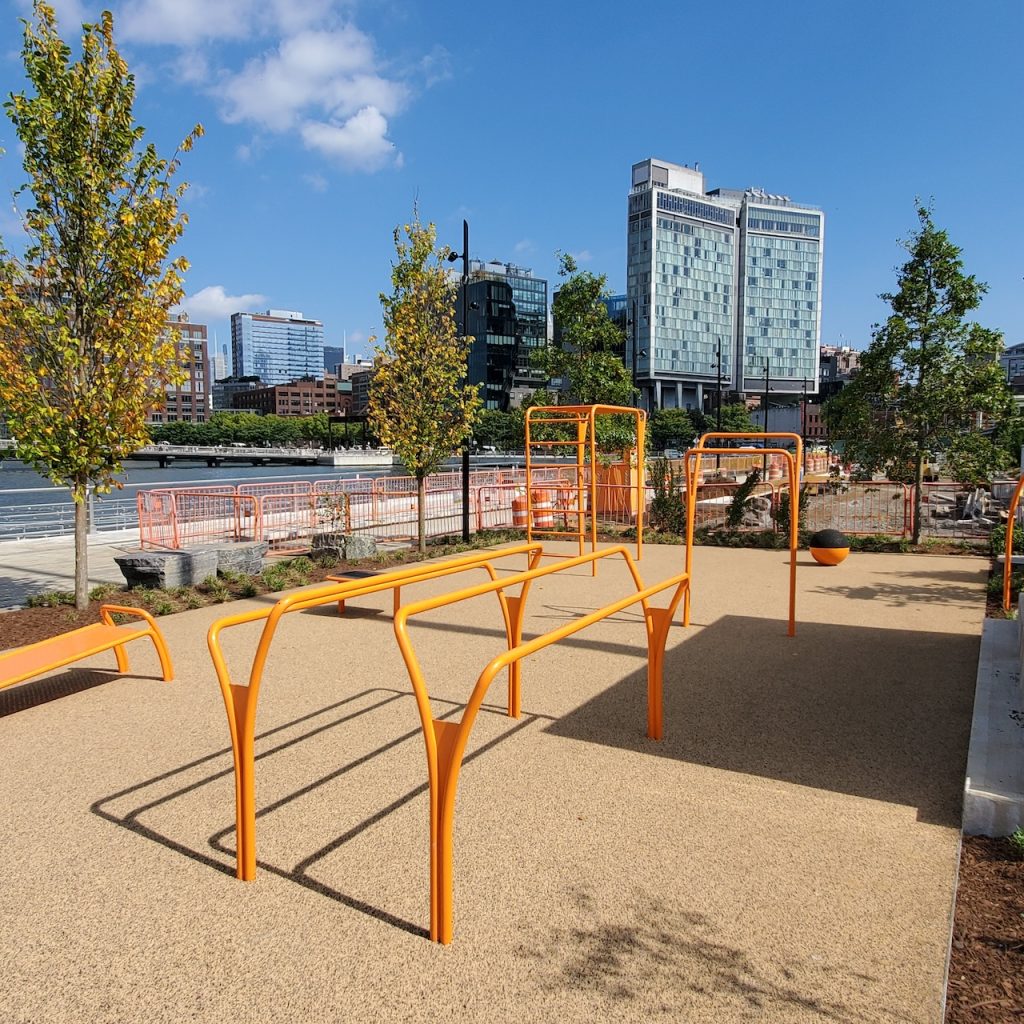
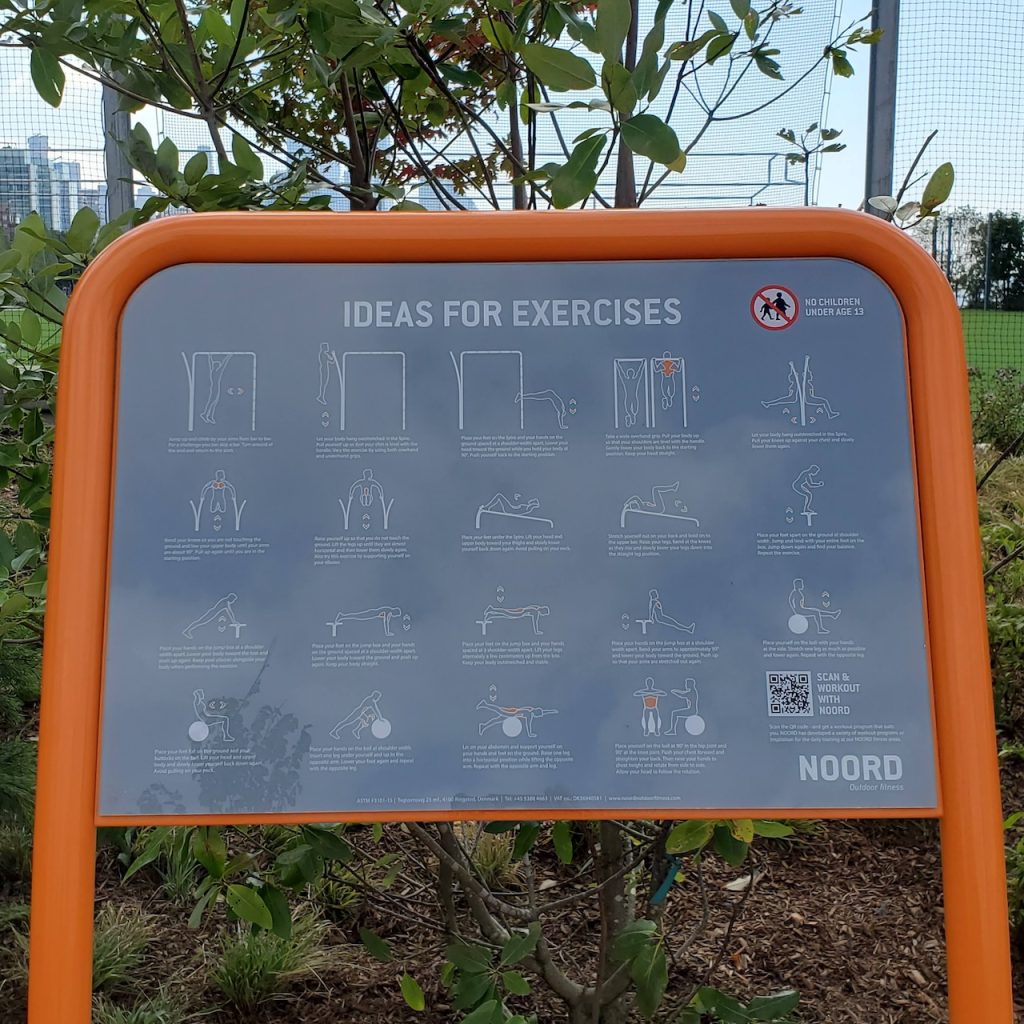
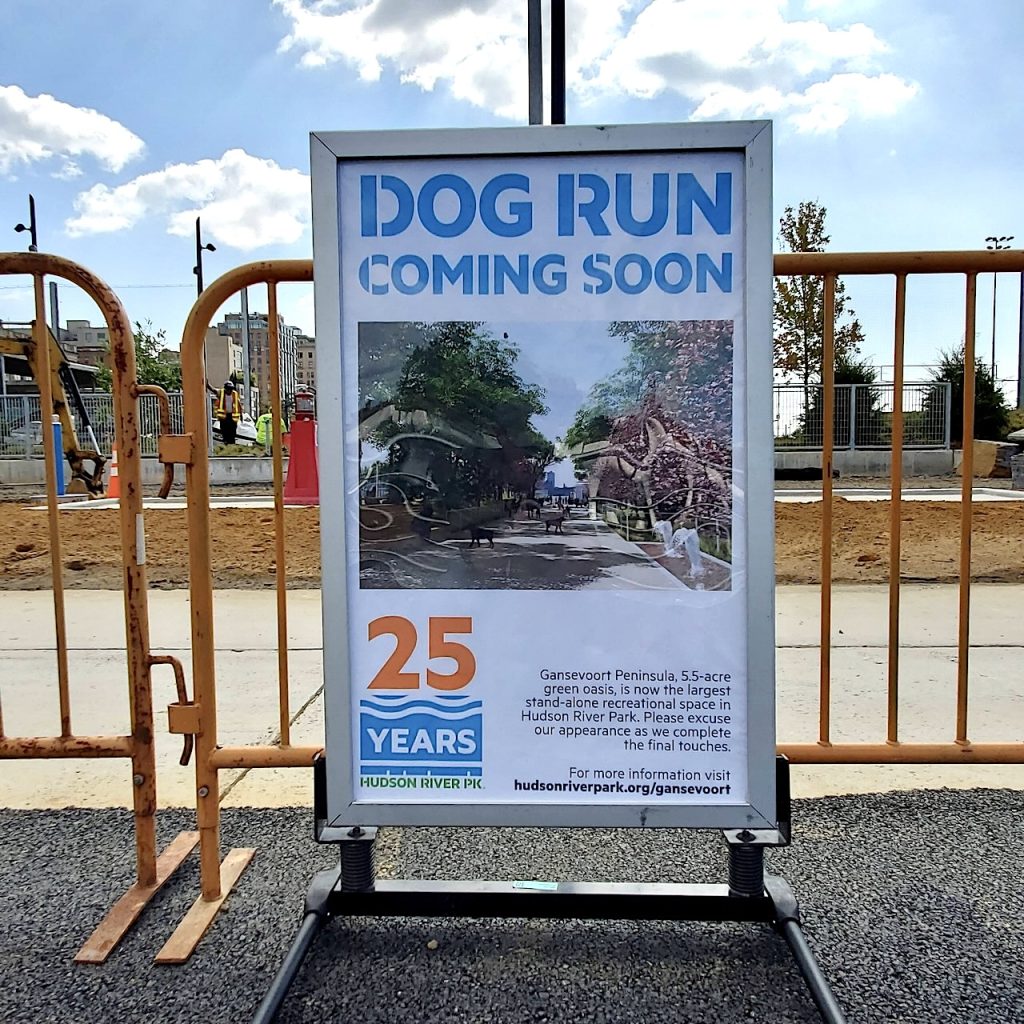
Another feature of Gansevoort Peninsula is that, unlike Hudson River Park’s many rehabilitated former shipping piers, it’s not a pier but actual land — or rather, landfill. Manhattan’s Lower West Side once extended out to a 13th Avenue: The city sold underwater lots to New Yorkers and the river was filled in by people dumping their trash and chimney and cooking ash into the water. But with the building of Chelsea Piers and the advent of ever-larger ships, the landfill was cut back to the present West Side shoreline. Gansevoort Peninsula, however, was left because, in an era before refrigerated supermarkets, it was a thriving outdoor market — a bit like a forerunner of today’s Greenmarkets, though on a much larger scale.
Later, Gansevoort was converted into an incinerator plant — officially known as the Gansevoort Destructor. Eventually, the city stopped incinerating trash there, yet continued using the incinerator building and peninsula for parking Department of Sanitation garbage trucks. Filing a lawsuit, the advocacy group Friends of Hudson River Park helped force Sanitation off the peninsula, clearing the way for the park’s creation. In 2018, the garage building on the peninsula was demolished. About a decade earlier, the incinerator’s twin smokestacks were razed.
To create the park on Gansevoort, the soil needed to be remediated, which involved removing its top layer, installing a barrier to ensure any residual toxins were contained, and then adding new soil on top.
In addition to Gansevoort, other new parts of Hudson River Park will be opening soon, including Pier 97, at W. 57th Street on the Upper West Side, and the Pier 26 Science Playground, at N. Moore Street in Tribeca.
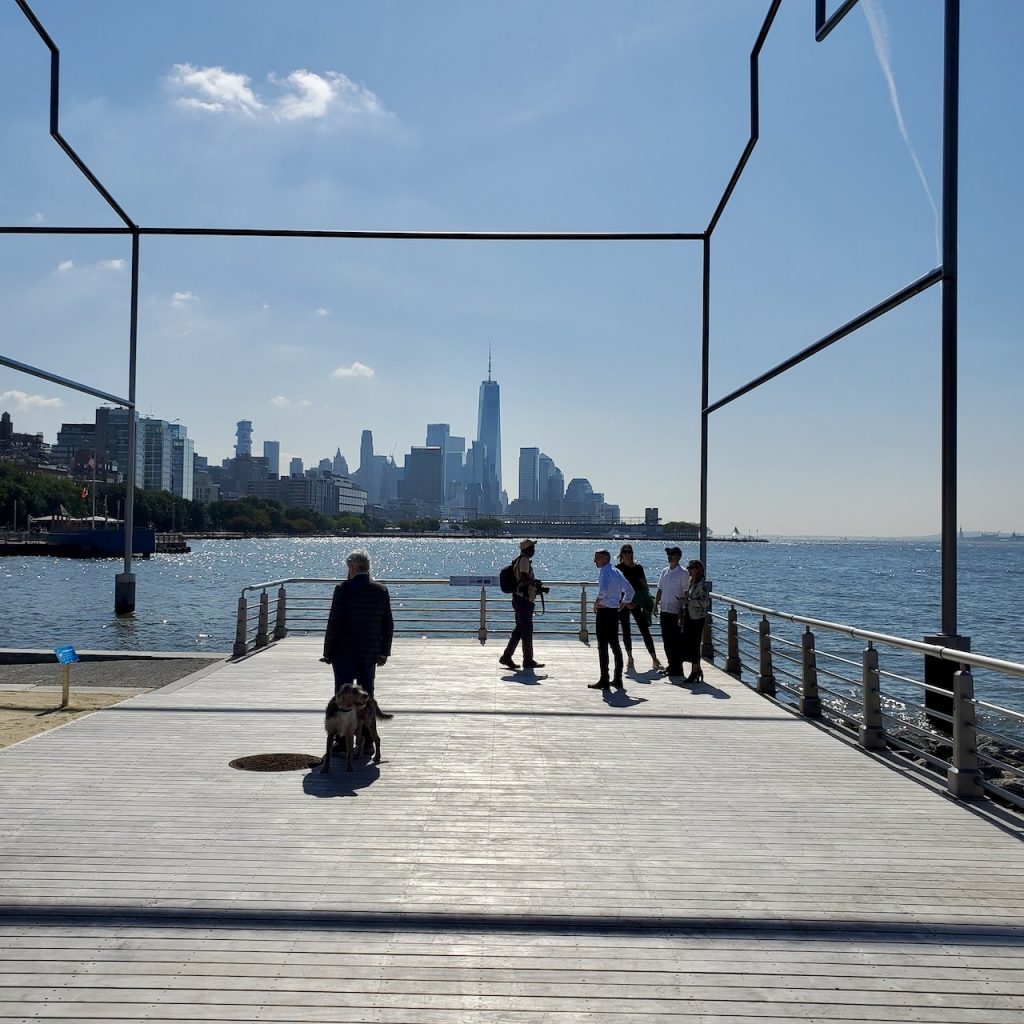
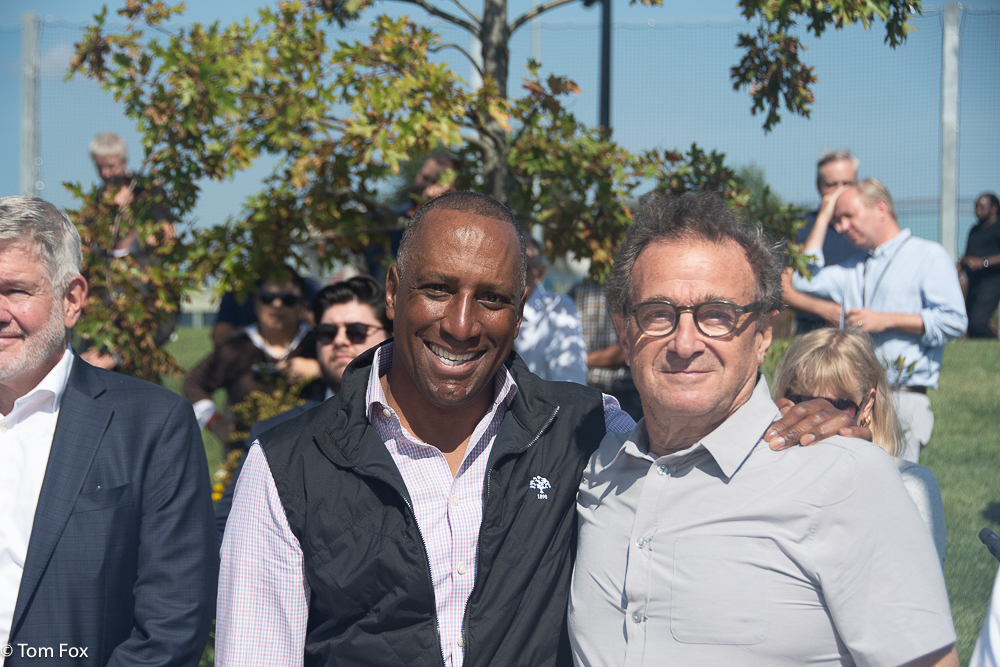
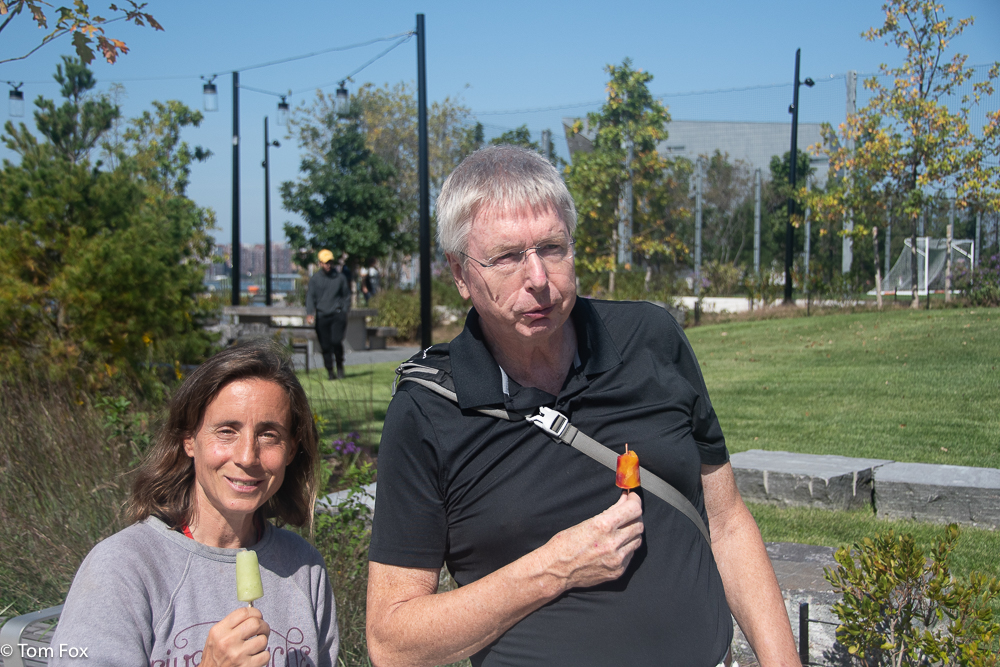
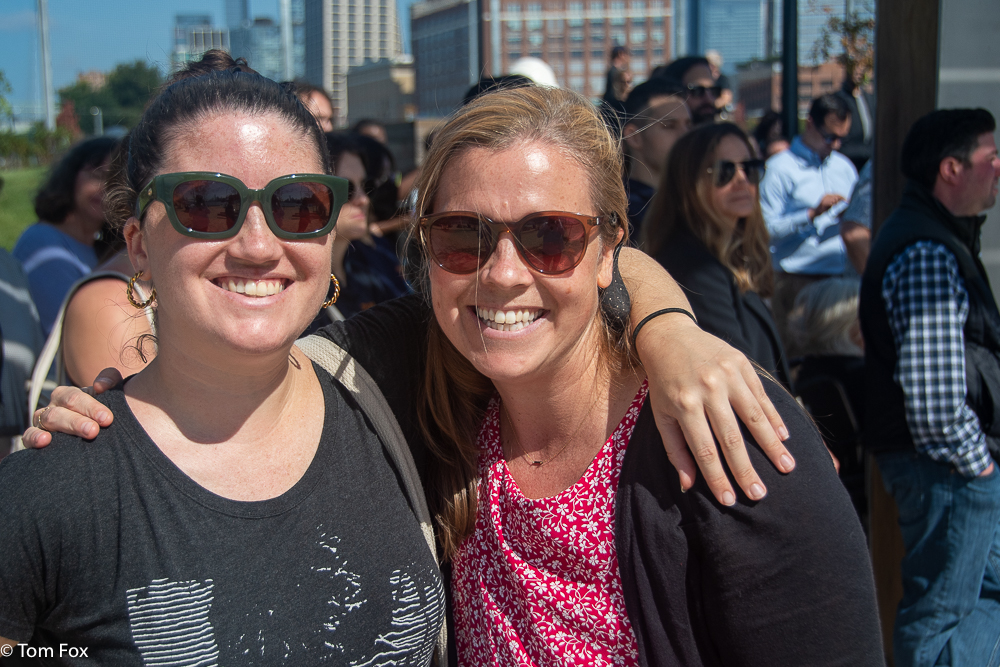
Pier 97, the park’s northernmost pier, will open later this fall, with a large creative playground, ball sports zone, and overlook and sunset deck. The Pier 26 Science Playground, opening in the next few months, features larger-than-life interactive play structures shaped liked native and endangered sturgeon species.
Other Hudson River Park piers still slated for redevelopment include two large mixed-use ones — Pier 76 in Chelsea and Pier 40 at W. Houston Street — which both are zoned for a combination of park and commercial uses.
Robert Balachandran, a former C.E.O. of the Hudson River Park Trust, was on hand for the Gansevoort dedication.
“Honestly, this to me was [going to be] the crowning jewel,” he said of Gansevoort. “I know it’s out of context because Pier 40 was supposed to go first.”
Touring the new park after the press ribbon-cutting, Councilmember Erik Bottcher called it “just awesome.”
“One of the great things here is that they accommodated both active and passive uses,” he said. “And this passive space is great because it doesn’t replicate other open spaces in the park. To think, later today there are going to be people here with beach towels.”

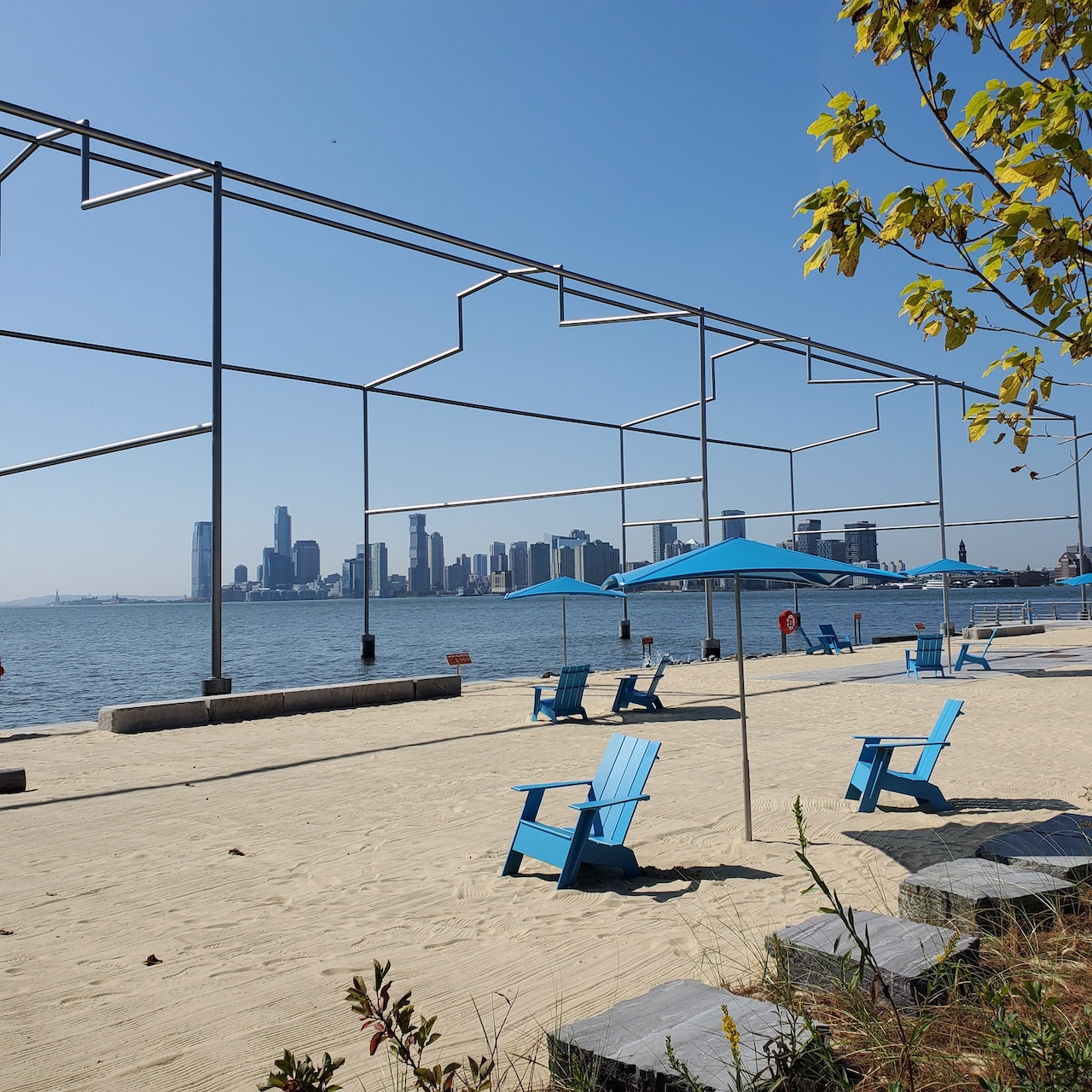
Looks great and so much easier than building anyplace for low-income New Yorkers. What was that saying attributed to Marie Antoinette.. “Let them eat cake.” The tourists will love it and they are the ones that really count around here. How much did this cost???
Gansevoort park is open to the public — anyone of any income level can use it. As stated in the article, the project cost $73 million.
Village Sun:
Have great appreciation and admiration for The Village Sun.
But it does seem fair to remind:
While open to the public, the park benefits 1) mostly affluent residents who already have so much, as well as other recreational options 2) real estate 3) tourists.
In contrast, green space and rec space is in short supply and in disrepair in lower-income areas of NYC.
Not super-easy or convenient for people in the boroughs, low-income residents to schlep in on the subway to go here.
$73 million is a lot of money — this is not just basic nice grass, trees and some benches.
IMO, everyone needs and should have basic green space — but don’t think it is OK to keep adding these expensive resources for the wealthiest people.
Looks nice and fun.
Still not understanding how all the progressive politicians are fawning at yet more luxury park/recreation resources for an affluent area – when the boroughs and low-income areas have so little.
I guess equity is not a concern when it is convenient for them LOL
The new beach is great. Went there times the week it opened.